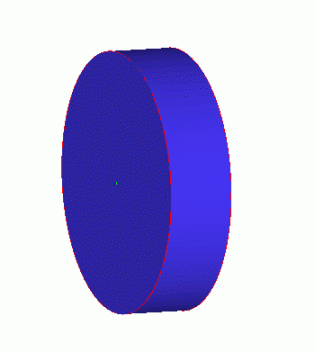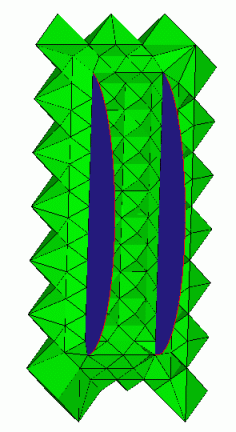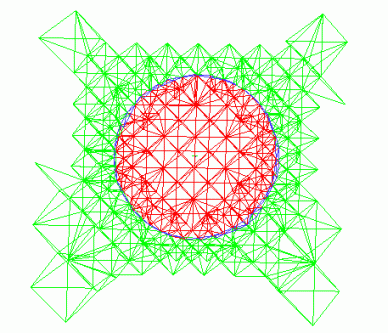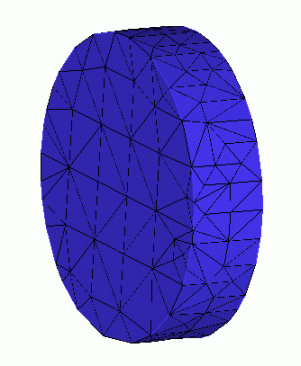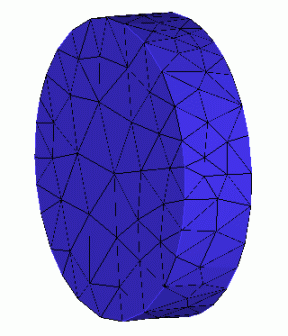The Octree mesh method is based on the following spatial subdivision algorithm: This algorithm ensures refinement of the mesh where necessary, but maintains larger elements where possible, enabling faster computation. Once the "root" tetrahedron, which encloses the entire geometry, has been initialized, Tetra subdivides the root tetrahedron until all element size requirements are met.
At this point, the Tetra mesher balances the mesh so that elements sharing an edge or face do not differ in size by more than a factor of 2.
After this is done, Tetra makes the mesh conformal (that is, it guarantees that each pair of adjacent elements will share an entire face). The mesh does not yet match the given geometry, so the mesher next rounds the nodes of the mesh to the prescribed points, prescribed curves, or model surfaces. Tetra then "cuts away" all of the mesh that cannot be reached by a user-defined material point without intersection of a surface.
Finally, the mesh is smoothed by moving nodes, merging nodes, swapping edges and in some cases, deleting bad elements.



